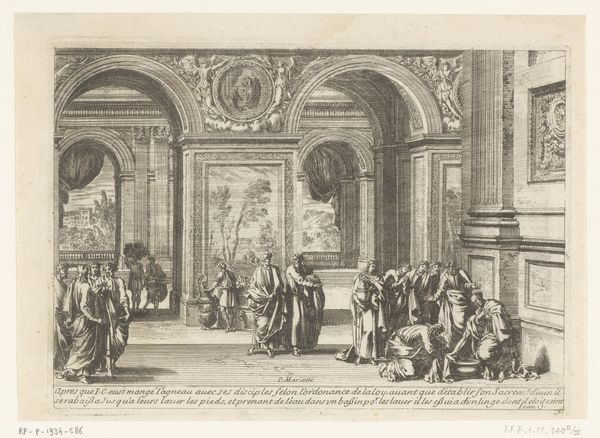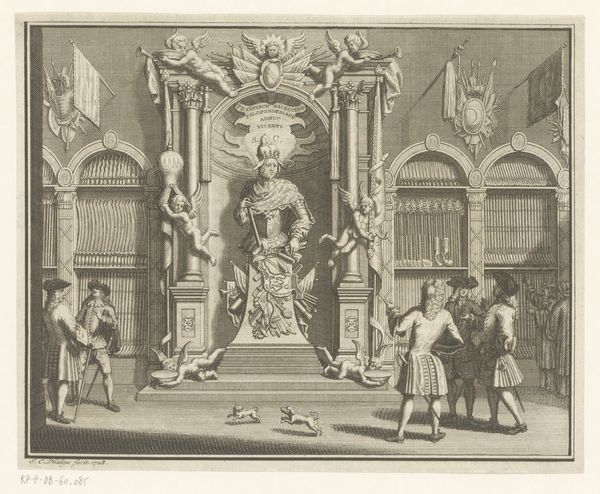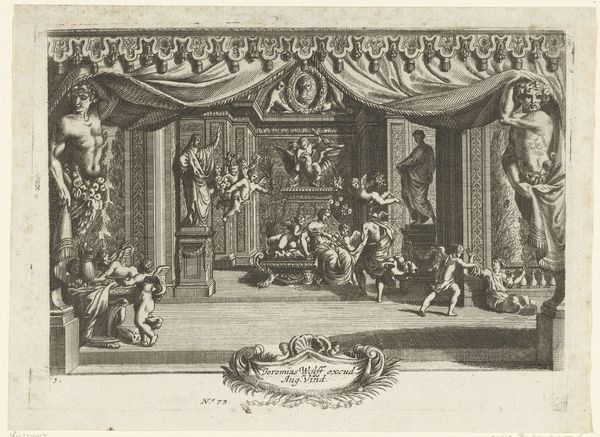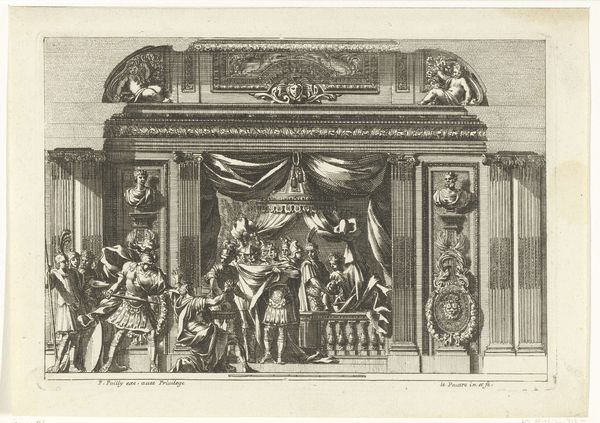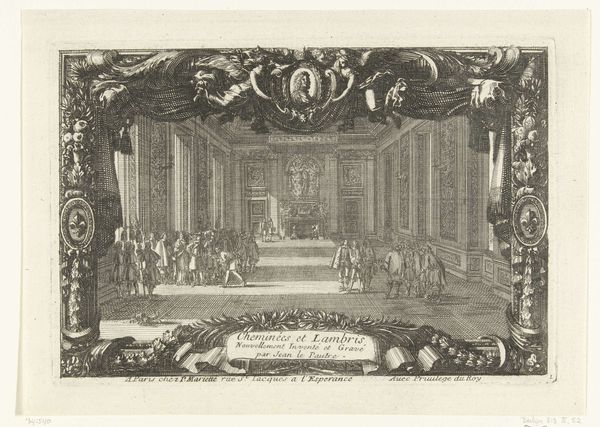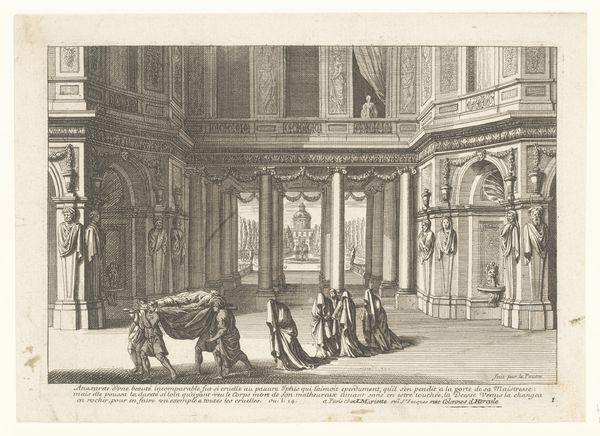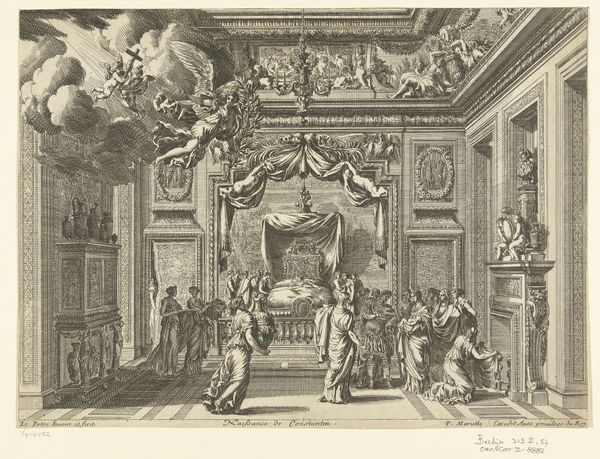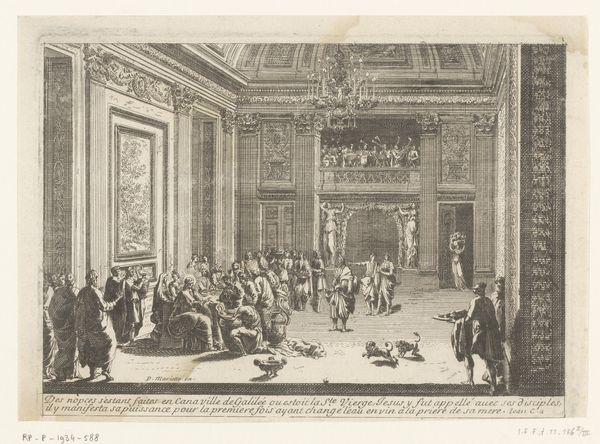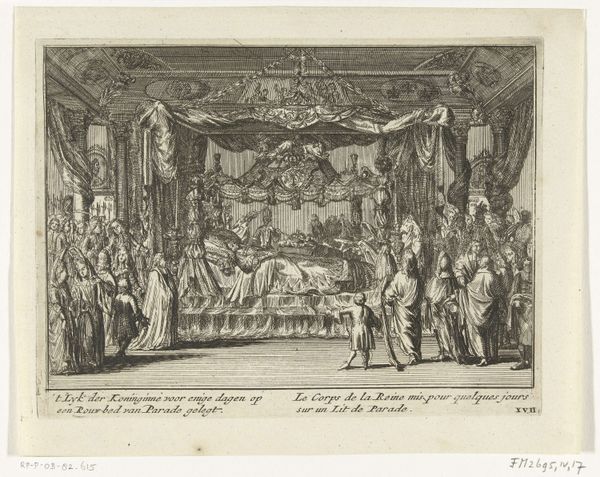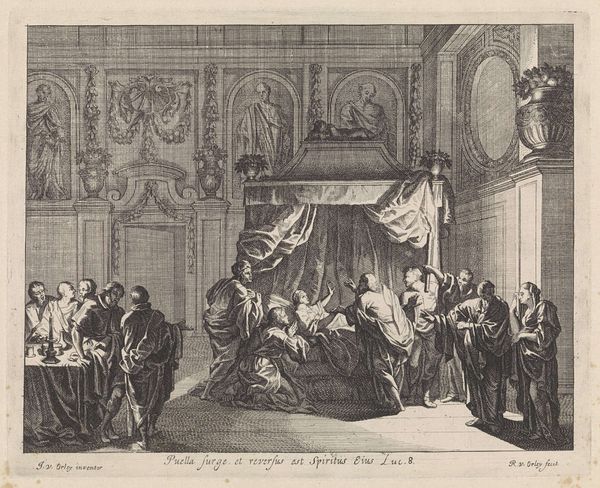
print, engraving
#
baroque
# print
#
old engraving style
#
perspective
#
figuration
#
line
#
history-painting
#
engraving
Dimensions: height 168 mm, width 213 mm
Copyright: Rijks Museum: Open Domain
Editor: Here we have Jean Lepautre’s "The Birth of Hercules," an engraving from the late 17th century. It's a very formal, almost theatrical scene, filled with people in classical dress within an ornate interior. What really strikes me is the composition – how would you interpret its historical context and visual language? Curator: Considering its socio-political context is crucial. The birth of Hercules, a story of divine intervention and heroic destiny, speaks volumes about power, legitimacy, and even anxieties surrounding leadership during that period. Think about it – the Baroque era was a time of absolute monarchs seeking to legitimize their rule through grand displays and allegorical narratives. How might the artist be engaging with or even subtly critiquing this idea through this specific scene? Editor: So, you are saying this print isn't just depicting a mythological scene, but also engaging with the era's political ideologies about rulers being inherently exceptional? Curator: Precisely. Look at the positioning of Alcmene on that imposing bed, surrounded by onlookers. This carefully constructed scene reinforces prevailing societal ideas about nobility and the 'exceptional' status of certain bloodlines and power structures. But I’d also invite us to reflect upon the role of women in propagating such narratives, whether as mothers of heroes or witnesses to these monumental events. Where do we find their agency here, and how might contemporary feminist perspectives reframe our understanding of their contribution? Editor: That’s really insightful. I hadn't considered the complexities surrounding female agency in promoting certain leadership ideals through depictions of mythological narratives. Curator: These engravings were tools that reinforced ideologies, yet as viewers, we have agency to question those messages and reimagine their significance. The past always holds contemporary resonance. Editor: Thank you. That’s really broadened my perspective on how to interpret artworks within their complex historical and social contexts!
Comments
No comments
Be the first to comment and join the conversation on the ultimate creative platform.

